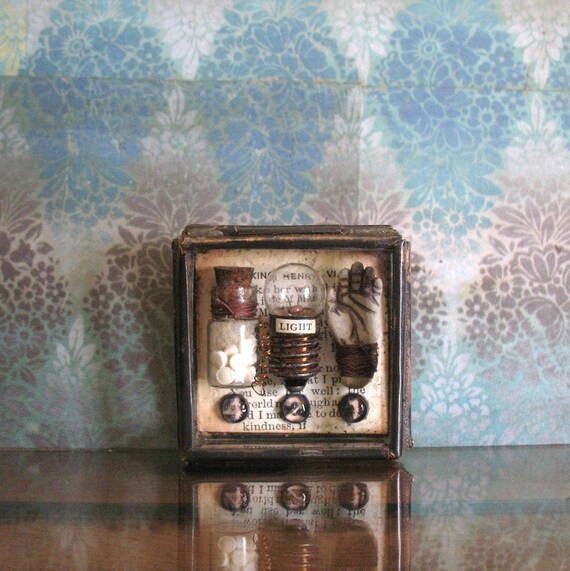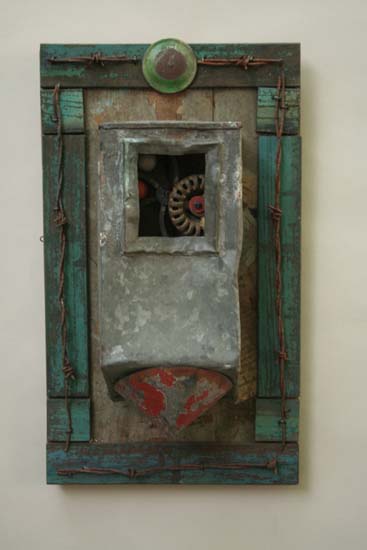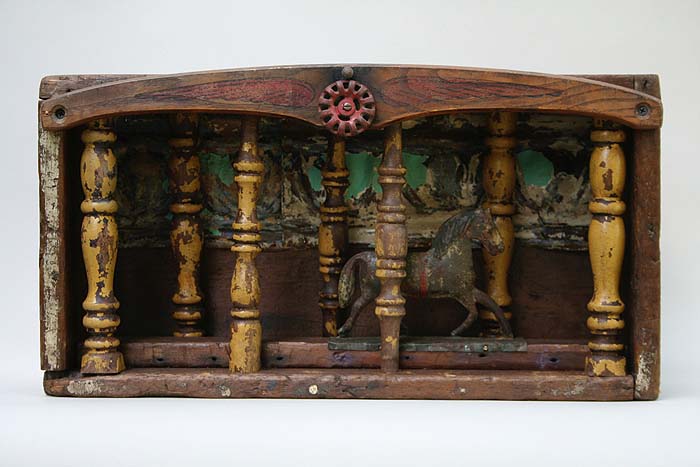Writing about art is famously like dancing about architecture, but I’m gonna attempt it anyway. The first part, not the second. Though you should see my Frank Lloyd Wright jitterbug retrospective.
Waaay back, I got an Art Minor with my Lit degree, but I never felt invigorated by the possibilities of my own work. Despite wanting to be a comic book artist through high school, I was never more than an indifferent 2-D artist (never had steady line quality in my ink work, and I hate paintbrushes with a passion that astounds even me), and I felt uninspired even in my sculture class.
Sometime near the end of that whole schooling thing, I discovered back issues of a magazine in the library — I’m not even sure what it was now, it could have been American Craft — that stunned and inspired me. The premise that ran through every issue was that of fine art (however you want to define that) created with the techniques and materials of craft production.
Inspired, as I said, but I was married with one kid, living in a tiny place, laboring in the poverty of studenthood so I could move on to the poverty of the private sector…
So recently I started making the creatures in jars which you see photographed poorly all over this site, inspired by such sites as Propnomicon, and I think it was through a Proponomicon link that I discovered this site: the art of Ron Pippin.
Inspired again.
Looking at Pippin’s work got me looking at other assemblages on Etsy, on DeviantArt, etc. In looking around and seeing what I like, I think I’m discovering WHY I like what I like.
1) I like design, which I simply define as “arranging elements in such a way that it’s aesthetically pleasing.” The abstract art I enjoy conveys a sense of design and purpose, even if that purpose isn’t explicit; that’s why I appreciate Mondrian and can’t stand Pollock.
2) I like texture, and assemblages — especially those which incorporate found objects — can put texture front and center.
3) I love assemblages that take identifiable objects or forms — a drawer, a candlestick, a chicken bone — and display them in such a different context that the viewer no longer simply labels them as that familiar object, but has to rediscover them in terms of form and shape. That sounds unbearably pretentious and precious, so let me explain it further (and hope that I end up sounding less pretentious, not more):
We don’t really see the things we’re familiar with; we identify them. If you really saw and examined everything you encounter every day — the fiber of the bedsheets, the sensation of the carpet under our toes, the bevel at the edge of the bathroom mirror, the quality of sound as one steps into the shower, and so on throughout the day — we’d be paralyzed and unable to focus. So instead we identify and dismiss, or at least relegate to its function in our lives: That’s a chair. That’s a cereal box. That’s a spouse. A good assemblage doesn’t hide the origin or identity of its pieces so much as place them in such a context that the function with which we identiy them doesn’t make sense, and we end up looking at them in terms of shape, color, texture, etc. as if they’re new objects.
(Note: As far as I’m concerned, recontextualization by itself is not sufficient to label something as “art.” That’s why I hate hate hate Roy Lichtenstein’s (mis)appropriations of comic panel art, because all it had was recontextualization: In a comic book under a child’s pillow it’s just trash, but in a gallery under inviting lights and surrounded by educated people eating pricy hors d’ouevres, it’s art!)
Anyway. All of this means that after I get done with my current slate of creatures, I’m going to try my hand at assemblages. Hopefully, by then I will be a marginally better photographer, and I’ll exhibit them here.






Have you heard of Joseph Cornell? You might like some of his work:
http://www.ibiblio.org/wm/paint/auth/cornell/
Yep, the “father of assemblage art.”
Finally crossed over from LBC to check this out. (Why did it take me so long?)
Consider another regular reader gained, particularly because of this! Really well-considered and educational post on assemblage art.
On another note; would you classify Dave McKean’s work as being a 2D version of the same principles?
Dave McKean is about the best collage artist out there — which is the 2D equivalent of assemblages.